Turn on the radio
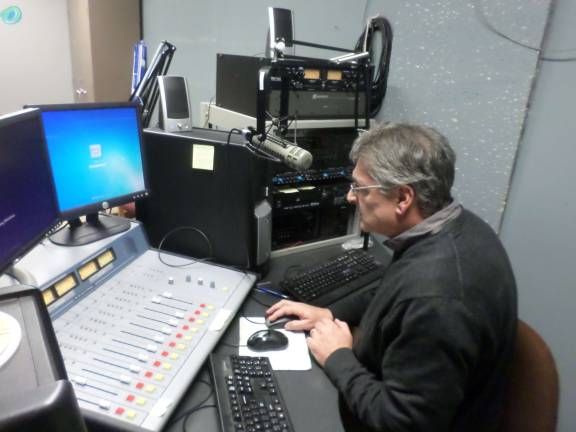
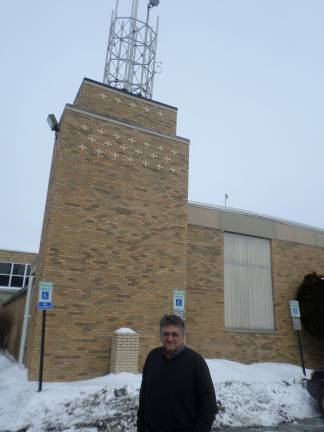
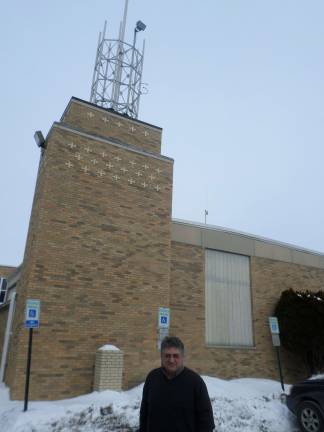
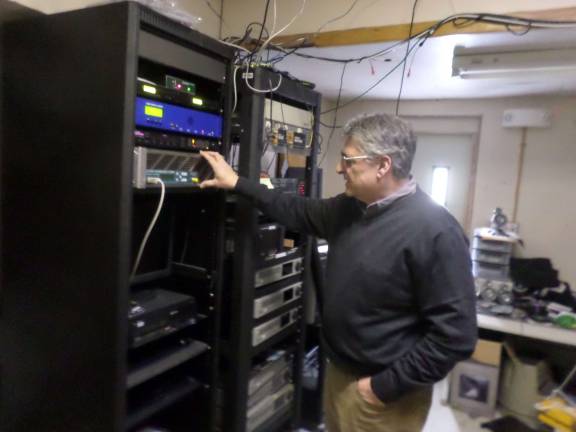
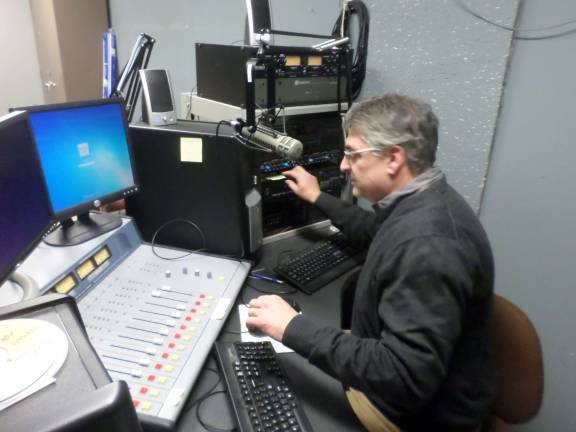
By Nathan Mayberg
NEWTON — The radio star is alive. In a matter of months, Sussex County Community College (SCCC) students will be broadcasting their favorite songs over the airwaves throughout the county and over the border into the neighboring states of New York and Pennsylvania.
Anthony Selimo, who helped build the college’s broadcast, film and journalism program started an AM station last summer at the college which plays automated oldies within a mile from the college on 1620 AM.
Now he is building a wide-ranging FM station which he expects to have operational on 97.5 FM WAMJ for the fall semester. The total cost to get it running is about $8,000 for equipment and another estimated $1,500 a year license fee. The AM station cost just $2,600 to setup, he said.
“I always wanted to get a radio station here on campus,” Selimo said.
"I like the immediacy (of radio)," he said.
Selimo cut his teeth at the William Patterson University radio station running a news show and playing bands like The Who, Foghat and The Beatles in the 1970’s. He envisions an FM station playing pre-programmed music that students select and put together, mixed in with shows that feature performances from local musicians, news, talk shows and educational programs. One professor at the college wants to do a program on psychology.
While he expects a lot of the shows to be pre-produced, he said those with enough experience could go live.
Selimo said he has interest from alumni who have taken his radio programming classes in the past and would like to return and have their own shows.
"It's great to see that interest," he said.
The radio signal for the AM station goes out from a small antenna on the top of the roof of the college’s gymnasium building. The FM signal will be delivered from a larger antenna at 49 feet high.
Selimo's musical experience includes playing the drums. Frank Sinatra is his favorite singer.
He already oversees the college’s television station, which plays on channel 20 on local cable television.
The television station produces the college’s basketball games, softball games and has a business show.
The television production team consists of himself, a chief engineer, a part-time school employee and contributions from members of the school's communications club and film club. The film club is currently producing a program on veterans.
In addition, Selimo does the sound production for the college’s plays and concerts.
Brianna Edwards, a freshman at SCCC, said she is looking forward to getting on the radio.
This week, she began taking Selimo's course "TV Production and Radio Performance."
Edwards would like to host a show playing mainstream hits.
"I've always been interested in radio," she said.
Armed with a master’s degree in broadcast journalism, Selimo has been providing the weather reports on local radio stations for years.
He previously was a professor at Ramapo College, where he found his way into working on music videos for Sugar Hill Records, which produced the legendary Sugar Hill Gang and the early pioneers of the rap genre.
Selimo worked with Sylvia Robinson, who ran the record company. Selimo handled production design and lighting for the music videos of several low-profile rap grounds in New Jersey during the 1980's.
Among his myriad of jobs over the years were contributing to the creation of NFL replay booths, helping on the audio and sound for New York Giants functions and helping to make Army Football highlight films.
A hockey fan, he helped start the hockey program in the Vernon School District and contributed to the production of an ESPN story on the former NHL all-star Theoren Fluery.
During a recent tour of the SCCC radio studio, Selimo showed how the AM station is programmed to play old hits from Bruce Springsteen’s “Born to Run” to Chubby Checker’s “Twist” through a computer.
“We’re just starting it up,” he said about the radio station.
The control board is setup along with computers to play the music for the AM station. Selimo has to setup the control board for the FM station, switch one computer for the AM station, connect some wires and cables, program the microphone and he will be good to go.
The songs will be played through a computer program that students enter in songs off their CD's and off Internet programs. Selimo has a 400 CD changer as a backup. He might put in a turntable for the AM station for students to practice on and learn.
He plans to use the AM station as a training center for students before they begin their own shows on the FM station.
Students will need to complete a semester-long class to get on the radio. By the end of the semester, the students could be on the air, he said.
The Sussex County Community College broadcasting department has been a solid training ground for numerous students who have gone on to four-year colleges and eventually landed jobs at television and radio stations like CBS Sports, Fox and Sirius radio, Selimo said.